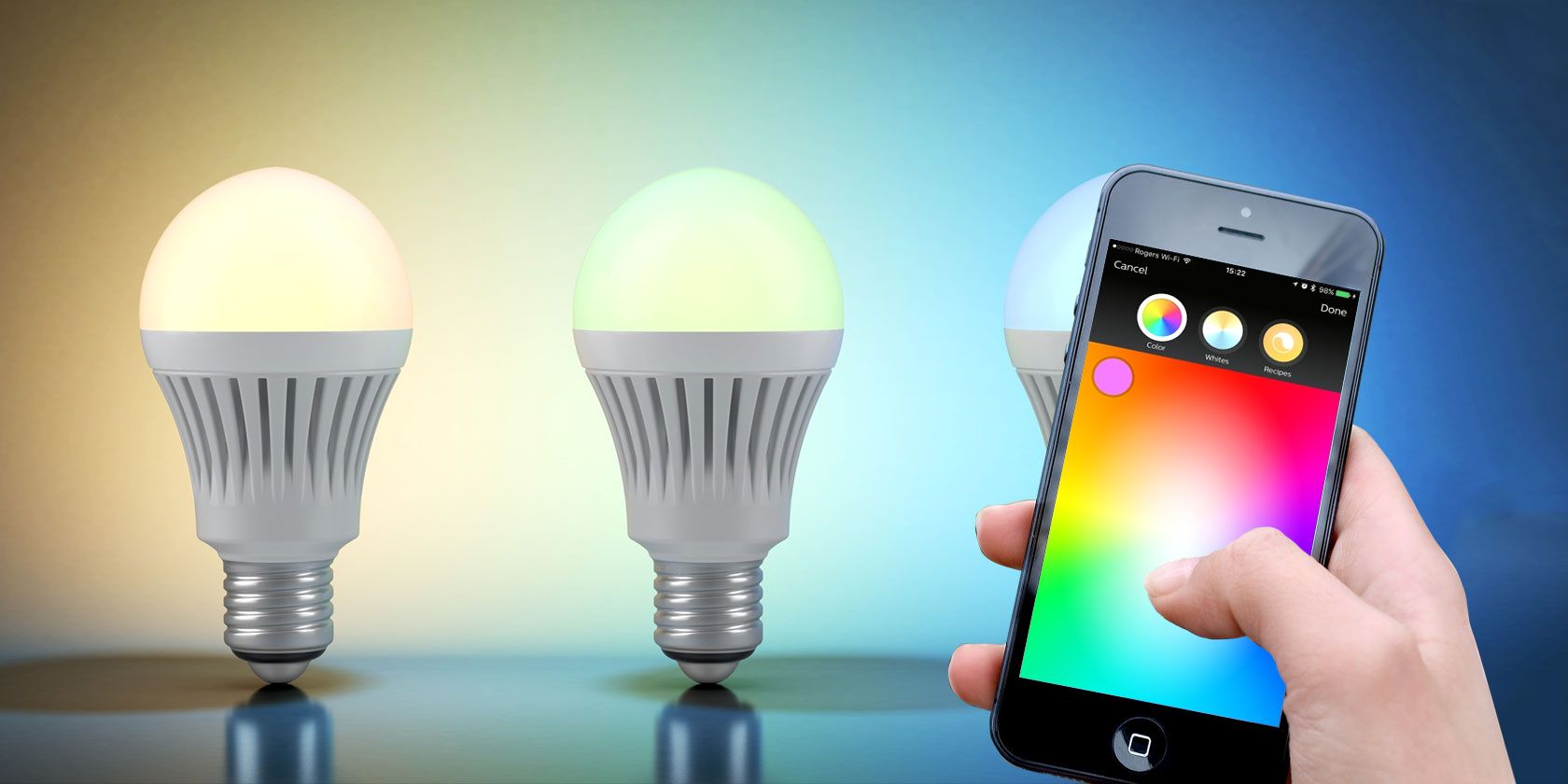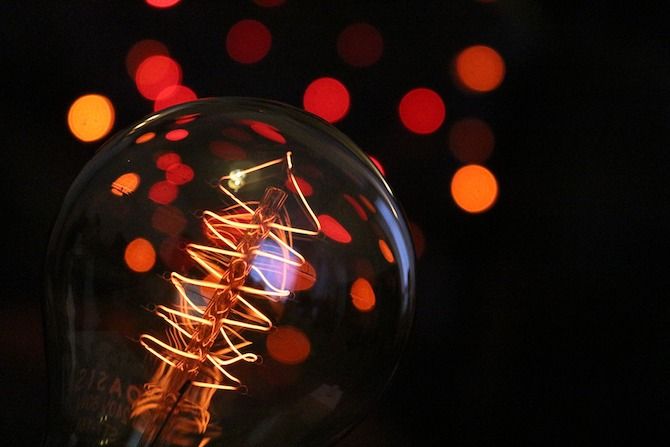There probably wouldn't be a smart home industry if it weren't for smart light bulbs. But have you ever stopped to ask yourself what makes a light bulb smart?
In this article, you'll learn all the little details about smart lighting products. Consider it your guide to all the things you wanted to know but were too afraid to ask. With this knowledge in your pocket, you'll be able to make the right decisions about smart lighting products for your home and budget.
What Makes a Smart Bulb Smart?
By definition, smart lighting is a technology designed for energy efficiency. Unlike traditional LED bulbs, which are increasingly also energy efficient, smart lighting offers automated controls that can make adjustments based on external conditions such as occupancy or daylight availability.
To determine whether a lighting product is smart, consider two simple giveaways. First, the product will have "Smart" somewhere in its title. Second, look at the description for the product for language indicating that it's controllable with an app.
The biggest names in smart lighting include Philips Hue, LIFX, TP-Link, GE, Lucero, Sylvania, Cree, Stack, Ilumi, and more.
Let's Connect
Smart home products, not just smart lighting, must connect in some way. The four biggest smart home automation standards are Wi-Fi, Bluetooth, ZigBee, and Z-Wave.
We've all heard of Wi-Fi. It's what we use to connect our laptops, cell phones, and tablets to the rest of the world. Wi-Fi takes a lot of processing power, which isn't a problem for devices that you can recharge overnight. However, it isn't the ideal solution for smart home products such as light bulbs, window sensors, and the like.
Bluetooth is another standard connection that's also imperfect. Though Bluetooth requires less power than Wi-Fi, it has a very limited range. Additionally, there are limitations to the number of devices that you can connect using Bluetooth.
This brings us to ZigBee and Z-Wave, which have become the two most common smart home wireless standards. Like Bluetooth, these standards require very low power consumption. Better still, their ranges are much greater than Wi-Fi because they operate through what is known as a mesh network.
Unlike Wi-Fi, which requires a router as a central connecting point, mesh networks allow each device to have a wireless signal. In doing so, devices can talk to one another in a more direct manner. When one device drops out, alternative routes remain, allowing the whole system to stay online.
Another benefit to both ZigBee and Z-Wave? You can use them to connect hundreds of smart home devices at the same time.
ZigBee vs. Z-Wave
For non-techies, the differences between ZigBee and Z-Wave are minimal enough that you probably won't notice. If you're the type of person that likes getting into the digital weeds, I point you to this quote from Securifi:
"Zigbee operates in 2.4 GHz range compared to the 908 MHz of Z-Wave which means that Zigbee can handle slightly higher rates of data transmission (9.6--100 kbps compared to 40--250 kbps), but can't transmit as far (100 feet compared to 35 feet) ... Finally, for security, they both have AES 128 encryption."
Now that you know how smart lighting products connect, it's time to look at some of the terms you may find when shopping for a product. Knowing what these terms mean will help you make a more informed choice.
Size Matters
By definition, you determine the size of a light bulb by measuring its diameter. Each size is expressed in increments of either 1/8 inch or one millimeter, depending on where you live. For example, an A-19 bulb is 19 eighths-inches or 2-3/8 inches in diameter. In metrics, this is the E26 bulb because it has a diameter of 26 mm.
If you're a little bit confused by these measurements, don't be. When it comes to smart lighting products for the home, the choices are still somewhat limited.
In the United States, A-19 or E26 is the size for most bulbs. This light features a "medium" or "standard" base. You'll also see E26 bulbs with a BR30 form factor. These are often described as flood or down lights and are perfect for recessed can fixtures.
You're also likely to run into E-14 "candelabra" smart lights very soon now that Philips Hue has announced two new products based on this standard.
Beyond this, you'll also see specialty smart lighting products in the market. These include LED strips, all-in-one lamps, and more.
Smart Bulbs Last a Long Time, But...
If you're new to smart lighting, you've probably experienced some sticker shock when it comes to pricing. Smart lighting products aren't cheap, ranging in price from around $15 for white bulbs to $55 for bulbs with color. However, these prices don't sound so bad when you consider how long they're supposed to last.
Before smart lighting, the light bulb industry used something called the Average Rated Life (ARL) to determine how long a bulb would last before it went out. This rating took into account how long it took for half the light bulbs in a test batch to fail. For example, an ARL of 1,000 meant that it took 1,000 hours for 50 percent of the bulbs to stop working.
For smart lighting products, things aren't always as clear. Instead of seeing an ARL rating, you''re likely to run into a number next to a term like "lifetime hours," "life," and "long life."
When expressed in hours, this number is straightforward – such as a bulb promising 25,000 hours of use. When a bulb promises to last a certain number of years, things aren't nearly as transparent and vary by vendor. The reason for this confusion is that you don't necessarily know how many hours that bulb is on each day.
The bottom line: Smart light bulbs typically last a very long time. In fact, in most cases, they'll last for decades. You might have to look at the fine print, however, for a more detailed number.
About Lumens
You'll hear a lot about lumens when looking into smart lighting. In its most basic form, lumens is the brightness of a light bulb. The larger the number of lumens, the brighter your light bulb can become on the highest setting.
As the U.S. Office of Energy Efficiency & Renewable Energy explains: "Lumens let you buy the amount of light you want. So when buying your new bulbs, think lumens, not watts."
Color Temperature
Besides lumens, you're also likely to run into the term "color temperature." The three types of color temperature for light bulbs include Soft White (2700--3000K), Bright White/Cool White (3500--4100K), and Daylight (5000--6500K).
In other words, the higher the degrees Kelvin, the whiter the color temperature.
About Those Colors
One of the most popular smart light features is their ability to change colors. Most of those available in the market promise more than 16 million color choices. This number comes from the RGB (red, green, and blue) system that's often used to represent the colors available on a computer display.
As WhatIs.com explains:
"Levels of R, G, and B can each range from 0 to 100 percent of full intensity. Each level is represented by the range of decimal numbers from 0 to 255 (256 levels for each color), equivalent to the range of binary numbers from 00000000 to 11111111, or hexadecimal 00 to FF. The total number of available colors is 256 x 256 x 256, or 16,777,216 possible colors."
In recent years, manufacturers have finally realized not everyone or every situation requires a color light bulb. Because of this, you're now seeing smart light bulbs listed as "white" or "white ambient."
With white bulbs, you can't change the color or temperature of the white. However, you can dim it like other smart light bulbs. White ambient bulbs still don't allow you to change the color, but you can change their temperature, usually between warm soft white and bright daylight.
From a pricing perspective, color light bulbs are the most expensive, while white light bulbs are the least expensive. White ambient lights fall somewhere in between.
Use Your Knowledge Wisely
It's important to know what to look for when buying smart lighting products. Important factors include the size of the bulb's base, color choices, how they connect, and more.
Hopefully, this article addressed those issues to make you a more informed buyer. Now you can shop with confidence when looking for the best ways to set up the lighting in your home.
What type of smart light bulbs do you buy and why? Let us, and other readers, know by commenting below.
Image Credits: Kostsov/Shutterstock




